HWC Tech Challenge Update: Thermal Elephant Alert System
 Anne Dangerfield
Anne Dangerfield
17 February 2020 12:00am
Embracing Failure Project: Share your experiences
 Iain Dickson
Iain Dickson
17 February 2020 12:00am
ICEI2020: 11th International Conference on Ecological Informatics
 ICEI 2020
ICEI 2020
14 February 2020 12:00am
Animove Summer School 2020
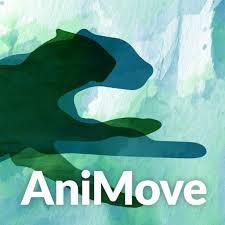 AniMove
AniMove
13 February 2020 12:00am
Curious about radio-tracking with drones?
29 January 2020 3:44am
12 February 2020 1:50pm
Hi,
Does your system work with normal VHF tags or do you make a custom tag for use in your system?
Does the drone have to be piloted manually in a particular path or pattern in order to acquire the tags?
Or can your receiver be placed on say a fixed-wing high speed drone programmed to fly a lawn mower pattern to cover the maximum amount of area?
I'm also curious how you are doing the direction finding, since there are no visible antennas, but I understand if you'd rather not talk about this (c:
Interesting work, thanks.
-harold
12 February 2020 9:33pm
Thanks for asking Harold,
We work with any off the shelf VHF tag, you can use tags already in the field or you can order tags from any of the manufactureres, just have to be VHF of in the case of satelite or GPS tags have a VHF componment.
The drone is piloted manually, you can see the tag locations on the base station in real time you can reposition the drone to avoid terrain challanges to get the best results.
We cover a lot of ground, I can do the math, flight patterns really come down to the application you are looking at animal being tracked ect, happy to discuss specifics further at you convenience.
We have videos of our work on out youtube channel
https://www.youtube.com/channel/UCj1pcEJHkEPCy94AlT0U7HQ
The oringinal research papers are on researchgate
https://www.researchgate.net/profile/Debbie_Saunders
You can book a virtual demo with me, I'd love to hear about your work and ideas. It would be great to give you a run through of the solution, flight patterns and user interface.
https://www.wildlifedrones.net/book-demo/
Robert
Wildlifedrones
+61 491 625 411
Seafood fund seeks ideas for innovation projects up to £250k
 Seafood Innovation Fund
Seafood Innovation Fund
11 February 2020 12:00am
WILDLABS Virtual Meetup Recording: Acoustic Monitoring
5 February 2020 12:00am
OpenSource Drag and Drop Windows 10 software builder
27 August 2019 9:32pm
30 August 2019 10:48am
Hi Ricardo,
Thanks for taking the time to respond. I'll look into the electronjs.org option and see if I can get VS through the uni.
If you come across any other drag-and-drop style platforms (preferably free) that you can use to build windows 10 software, it would be great if you can pop me a message on this. Something like what you get when building a website through Wordpress or Wix would be perfect.
Cheers again!
20 January 2020 3:46am
Hi Kas
LiveCode is open source (www.livecode.org) and can build for multiple platforms - Windows, MacOS, Linux + mobiles. Might be worth having a look at - it has an english-like scripting language and drag + drop GUI builder. You can develop on multiple platforms too so not limited to Windows.
You're probably already finished, but maybe someone else will find it useful.
2 February 2020 10:19am
Hi Alan,
Thanks for the suggestion.
I ended up using Visual Studio but will take a look at LiveCode for future work - sounds very cool.
Thanks,
Kas
Innovate for Wildlife and People Challenge - Deadline February 24
20 December 2019 6:36pm
31 January 2020 1:06pm
Hi Everyone -
This Innovation Challenge is now open for Project Ideas, so if you are interested please go ahead and read more on the Challenge page here, where you will also find the link to Sign Up as a Project Leader or download a PDF that shows the application template and the background to the challenge.
We really welcome any ideas that fit the challenge description, and if you engage, we will have a chance to also further develop your Project idea during the review phase, based on feedback by a global community of subject-matter experts.
https://impactio.global/innovate-for-wildlife-and-people-challenge
Any questions, I am here! Anna
Habitat Restoration in the Pennines, UK
30 January 2020 8:48am
CAPSULE- World’s Largest Hackathon for Conservation
21 January 2020 1:17pm
Looking for an Internship
21 January 2020 4:25am
Internship Wanted: Conservation & Animal experience
21 January 2020 4:13am
Race against a GPS tagged snow leopard
21 October 2019 9:58am
20 January 2020 4:01am
URL is www.runtastic.com/run-wild
내려 anigana.co.kr/sandz/ - 샌즈카지노
16 January 2020 12:15pm
LIDAR USA sensor
14 January 2020 12:38pm
ImageNet?
31 October 2019 6:36pm
9 November 2019 10:47pm
Hi, deep learning frameworks like Pytorch and Tensorflow come with state-of-the-art image recognition models (VGG, GoogleLeNet, ResNet, Inception etc.) already pre-trained on ImageNet, so one can just download and use them straight away.
This provides a solid starting point as these models have already learnt how to classify objects really well. Transfer learning can then be used to fine-tune them for a specific task like identifying ivory in photos. This just requires that you tweak the existing model a bit and train it on a smaller custom dataset of the image’s/categories you would like to classify.
Hope that helps!
9 January 2020 7:44pm
Really helpful, @adnortje ! And thanks for listing out some of the latest and greatest image recognition models. Do you know of any programs that are using GoogleLeNet for wildlife image recognition, by chance?
13 January 2020 4:31am
Google’s Wildlife Insights, mentioned in another thread, can classify 614 different animal species.
It uses the Inception-V4 model as a basis, which is similar to GoogLeNet, and tunes it on camera trap images (https://www.wildlifeinsights.org/about-wildlife-insights-ai).
Wildlife Insights - Google's latest AI project!
10 January 2020 9:57pm
[ARCHIVED] Workshop on Deep Learning Methods and Applications for Animal Re-Identification at WACV2020 Conference!
9 January 2020 7:48pm
Number of radio collared animals?
9 December 2019 7:27pm
4 January 2020 10:58pm
There are over 7000 tracked animals via Argos alone (monthly). More info here - http://www.argos-system.org/applications-argos/wildlife-monitoring/
5 January 2020 10:49am
Thanks Alasdair
So there are low double figure thousands just with the various services of satellite collars. Then surely high tens of thousands, maybe low hundreds of thousands with terrestrial GPS and conventional VHF.
List of grant opportunities for conservation dogs
14 May 2018 9:48pm
31 August 2018 9:57pm
Two more resources that may be worth checking (USA):
- Working Dogs for Conservation https://wd4c.org/
- Conservation Canines - Center for Conservation Biology, University of Washington https://conservationcanines.org/
(Thanks to Kate Wing for the tips).
27 April 2019 5:22pm
Just learned about this community and am super excited to see it exists. I wanted to comment on Conservation Canines (CK9). I served as the coordinator for CK9 for 18 years. The majority of CK9, including myself and its 17 dogs, have broken off and are trying to get a new program set up called Rogue Detection Teams! We are just getting our paws under us but we are all super excited to be unleashed from the University and embarking on a grand new adventure. Rogue Detection Teams can be reached at [email protected] and also found on Facebook @roguedogs and IG and Twitter at @roguedetection. We have a website in the works at Roguedogs.org but it is not up just yet. Looking forward to being a part of the community. Dogspeed!
3 January 2020 7:17pm
Hi Yvan, My name is Jennifer Hartman and I work with Rogue Detection Teams, a program that works with and instructs conservation detection dog teams. Did you ever receive enough information to pursue your project? If not, one, we'd love to learn of more opportunities ourselves, as we have many conservation projects that we would like to support and are unable to. Additionally, we have recently learned about a group, Midwest Conservation Dogs who just received a grant to train a new dog. I think it was a local grant but we're sure that they would be more than hh=appy to discuss with you how they received their grant. Most of our projects that we conduct, and we have worked on storm petrel burrows in Haida Gwaii, British Columbia, come from government funding or special program fudning (some past partners include The Nature Conservancy, World WIldlife Fund, various univeristies, etc.). We're happy to discuss how we might help to get your project off the ground, or if you have already conducted it, we'd love to learn how it went and how you were able to fund it. We can be reached at [email protected] or our website is at roguedogs.org. Warm regards in the New Year, Jennifer
Conservation dogs deployed in Assam to counter poaching
26 June 2017 3:33pm
27 June 2017 11:09am
Countryfile Working Animals Compilation - 04:48 conservation dogs sniffing our bats and newts.
http://www.bbc.co.uk/iplayer/episode/b08wysbf/countryfile-working-animals-compilation
27 June 2017 2:53pm
Awesome!
3 January 2020 7:13pm
Hi jprobert, my name is Jennifer Hartman and I work with Rogue Detection Teams. I wanted to share some other resources for you if you are still interested in learning more about conservatin detection dogs and thier applications. From live animals, invasive species as well as scat and toxin surveys, our teams have conducted a great many projects around the world and we're happy to talk shop with you. There are also several other detection dog groups around the world and if you would like to be put in touch with them, we're happy to assist. Please let us know if we can help. We can be reached at [email protected] or you can first check us out at roguedogs.org. Warm regards, Jennifer
Thermal imaging, drones, and loggerhead sea turtles: a #tech4wildlife case study using FLIR's new Duo Pro R camera
21 September 2018 3:21pm
24 December 2019 6:42am
Rob thanks for the offer, sorry about delay in reply work has been in way. I have spoken to our coordinator here and we would be interested in borrowing flair 640 to see if it helps locate. Let me know he best way to get in touch.
2 January 2020 5:10pm
Hi thermal people,
Just a quick heads up, but I am exploring some of Seek Thermal's (ex FLIR engineers I believe) new Mosaic Core modules by having a play with their developer's kit. I'll report back once I receive the equipment, but their intention is to release 320 x 240 cameras at very low cost. Note - they won't sell them individually, so a reseller will be necessary, but if they are cost effective at this resolution it could prove excellent for wildlife conservation use.
https://www.thermal.com/uploads/1/0/1/3/101388544/mosaic_core_specification_sheet.pdf
Cheers,
Alasdair
2 January 2020 6:12pm
Cheers Al, and looking forward to hearing more about them. I am, as we speak, editing some thermal videos of wallaby behaviour near roads, specifically in relation to devices that activate lights and sounds when a car is approaching (activated by vehicle headlights at night). Used a Flir 640R, but I reckon half that resolution would still be fine. Unfortunately, not much support for the devices themselves working as a deterrent/warning (although I have some ideas on how they could with additional stimuli), but the thermal camera works great for non-invasive observations!
Radio telemetry
4 June 2019 4:39pm
5 June 2019 11:33am
Hi Helen,
Two suggestions coming through over twitter:
A good start is to reduce your reciever's gain as far as possible.
Hopefully you can snuff out the antenna's rear lobe that way. Headphones really help there too. https://t.co/9Eg4gpHVly
— Faunatech Austbat (@FtechAustbat) June 5, 2019
sometimes it helps to put your body behind the antenna at about waist height. Does that make sense?
— Rob Appleby (@wildspyrob) June 4, 2019
Steph
18 December 2019 4:00am
Hi Helen, what tags are you using? Position on the animal and what species?
24 December 2019 5:07pm
HI there,
Biotrack combined Avian GPS SOB tag & PicoPip AG317 Tag on the back of Hawfinch.
H
Webinar: The Business of Saving the Planet: Technology, Innovation & Intelligence in Conservation, Jan 7
20 December 2019 4:32pm
Average speed system needed
15 December 2019 9:27am
20 December 2019 1:11pm
Dear Sam,
PS. As a starter we could easily have rumble strips put in to slow traffic down at teh beginning and teh end so that the vehicles would not be flying past your detector.
I do understand this challenge as when collecting data over 700 metre stretches using a stopwatch we tried to catch numberplates with a standard motion camera and unless the vehicles were slow we never got the number plate.
20 December 2019 1:15pm
PPS 4 - 800 should have been 4-8000 THOUSAND
20 December 2019 1:16pm
Hi Gregory,
That is quite shocking to hear that a road could be so detrimental to wildlife. If you were able to place a speed hump or rumble strip where you place the camera you could even embed the metal detecting sensor in them to ensure accurate detection of every vehicle when they are going slower.
Our camera takes a burst of images and this can be set to be quite a quick burst or a slower burst so with a little bit of testing I am sure we could get the numberplates.
I am assuming that a lot of time these collisions happen at night. Would there be a way to have a fixed light at the camera locations as otherwise the cameras can be blinded by headlights and taillights making reading the VRN difficult.
At the moment our system is satellite connected. This does have a relatively high monthly data cost. We are also planning to develop a cellular version but this will require more funding and development time that we have not got yet.
The system is in the final stages of development and we plan to launch it in mid-2020 once it has undergone some prolonged field trials at ZSL sites, so it is not currently available. Final costings are still under review and will be released early next year.
I am sorry that we are not able to provide this capability to you right now.
Have you found any commercially available camera systems? In the UK I believe the automatic number plate recognition cameras placed on gantrys over motorways are called SPECS and a quick google said they are sold by a company called Jenoptik. If you find out how much they are and how they work, perhaps you could update this thread?
Thanks,
Sam
Acoustic Telemetry Workshop Series
 Ocean Tracking Network
Ocean Tracking Network
19 December 2019 12:00am
Innovate for Wildlife and People: Incentivising and rewarding community-based wildlife conservation
 WWF Wildlife Practice
WWF Wildlife Practice
19 December 2019 12:00am
AI for camera trap public data
17 December 2019 9:20pm
Open source, low cost proximity loggers
17 December 2019 10:45am




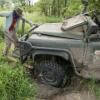

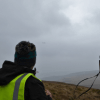
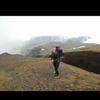


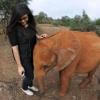




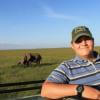



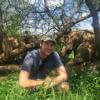
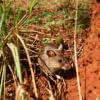
31 January 2020 8:26am
Hello Laura,
Thanks for the detailed response. It sounds like a very interesting use of drone technology.
Many thanks,
Mark